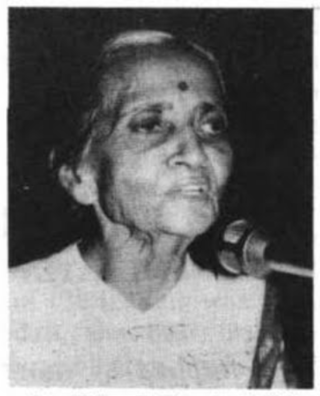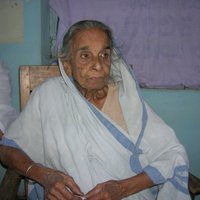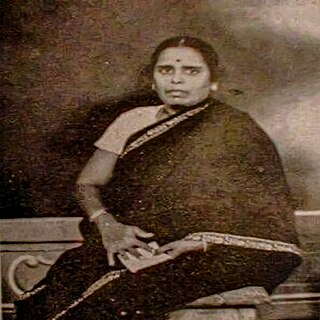Related Research Articles

Jayaprakash Narayan Srivastava, also known as JP and Lok Nayak, was an Indian politician, theorist and independence activist. He is mainly remembered for leading the mid-1970s opposition against Prime Minister Indira Gandhi and calling for her overthrow in a "total revolution". In 1999, Narayan was posthumously awarded the Bharat Ratna, India's highest civilian award, in recognition of his social service. His other awards include the Magsaysay award for public service in 1965.

Rajendra Prasad was an Indian politician, lawyer, journalist and scholar who served as the first president of India from 1950 to 1962. He joined the Indian National Congress during the Indian independence movement and became a major leader from the region of Bihar. A supporter of Mahatma Gandhi, Prasad was imprisoned by British authorities during the Salt Satyagraha of 1930 and the Quit India movement of 1942. After the constituent assembly 1946 elections, Prasad served as 1st Minister of Food and Agriculture in the central government from 1947 to 1948. Upon independence in 1947, Prasad was elected as President of the Constituent Assembly of India, which prepared the Constitution of India and which served as its provisional Parliament.

Kasturba Mohandas Gandhi was an Indian political activist who was involved in the Indian independence movement during British India. She was married to Mohandas Karamchand Gandhi, commonly known as Mahatma Gandhi. National Safe Motherhood Day is observed in India annually on April 11, coinciding with Kasturba's birthday.

The Quit India Movement was a movement launched at the Bombay session of the All India Congress Committee by Mahatma Gandhi on 8 August 1942, during World War II, demanding an end to British rule in India.

Aruna Asaf Ali was an Indian educator, political activist, and publisher. An active participant in the Indian independence movement, she is widely remembered for hoisting the Indian National flag at the Gowalia Tank maidan, Bombay during the Quit India Movement in 1942. Post-independence, she remained active in politics, becoming Delhi's first Mayor.

Usha Mehta was a Gandhian and independence activist of India. She is also remembered for organizing the Congress Radio, also called the Secret Congress Radio, an underground radio station, which functioned for few months during the Quit India Movement of 1942. In 1998, the Government of India conferred on her Padma Vibhushan, the second highest civilian award of the Republic of India.

Congress Radio, also known as Azad Radio, was an underground radio station that operated for about three months during the Quit India Movement of 1942, a movement launched by Mahatma Gandhi against the British Raj for independence of India. Congress Radio was the broadcasting mouthpiece of the Indian National Congress and functioned from different locations in Bombay, present-day Mumbai, and briefly from Nashik. It was organized by Usha Mehta (1920–2000), then a 22-year student activist, with the help of amateur radio operators. Others who were involved included Vithalbhai Jhaveri, Vitthaldas Khakar, Chandrakant Jhaveri, and Babubhai Thakkar. The broadcasting equipment was supplied by Nanik Motwane of Chicago Radio, Bombay. Prominent leaders of the Indian independence movement like Ram Manohar Lohia, Achyutrao Patwardhan, and Purushottam Trikamdas were also associated with Congress Radio.
Vinod Kinariwala was an Indian independence activist from Ahmedabad, India. He was shot dead by a British officer while waving the Indian flag in front of Gujarat College on 9 August 1942, the first day of the Quit India movement started by Mahatma Gandhi. The British officer asked him to drop the flag Refused to do so. He was later shot dead by an officer. He was 18 years old at the time of his death.

Matangini Hazra was an Indian revolutionary who participated in the Indian independence movement. She was leading one of the five batches of volunteers, constituted by the Samar Parisad, at Tamluk to capture the Tamluk Police Station on 29 September 1942, when she was shot dead by the British Indian police in front of the Police Station, becoming the first "Quit India" movement martyr in Midnapore. She was a staunch Gandhian and was fondly called as Gandhi buri, Bengali for "old lady Gandhi".
In India, Flag Satyagraha is a campaign of peaceful civil disobedience during the Indian independence movement that focused on exercising the right and freedom to hoist the nationalist flag and challenge the legitimacy of the British Rule in India through the defiance of laws prohibiting the hoisting of nationalist flags and restricting civil freedoms. Flag Satyagrahas were conducted most notably in the city of Jabalpur and Nagpur in 1923 but also in many other parts of India.

The Quit India speech was given by Mahatma Gandhi on the eve of the Quit India Movement, 8 August 1942. His address was issued shortly before midnight, at the Gowalia Tank Maidan park in Bombay, which has since been renamed August Kranti Maidan.

Akkamma Cherian was an Indian independence activist from Travancore (Kerala), India. She was popularly known as the Jhansi Rani of Travancore.

Labanya Prabha Ghosh (1897–2003), also called Labanya Devi, a Gandhian, was a prominent personality of the Indian freedom movement, from Purulia District of West Bengal. She lived for almost 106 years and during later part of her life, was forced to live in a poverty-stricken ashram, her only source of income being a pension paid for freedom fighters. All through her life, before and after independence of India, she fought for justice of common man.

Annapurna Maharana was an India pro-independence activist active in the Indian independence movement. She was also a prominent social and women's rights activist. Maharana was a close ally of Mahatma Gandhi.
Pushpalata Das (1915–2003) was an Indian independence activist, social worker, Gandhian and legislator from the north-east Indian state of Assam. She was a member of Rajya Sabha from 1951 to 1961, a member of the Assam Legislative Assembly and a member of the working committee of the Indian National Congress. She served as the chairperson of the Assam chapters of the Kasturba Gandhi National Memorial Trust and Khadi and Village Industries Commission. The Government of India awarded her the third highest civilian honour of the Padma Bhushan, in 1999, for her contributions to society.

Anjalai Ammal was a social worker and reformer from Cuddalore, Tamil Nadu. She spent seven and a half years in prison for her participation in the independence movement. She was among the early women to be elected to the Tamil Nadu State legislature, serving as a Congress MLA following her election victories in 1937 and 1946.
Babu Chotelal Srivastava was a freedom fighter in the area that would later become Chhattisgarh. He was born on 28 February 1889 in Kandel. His participation in national movements began after he met Pt. Sundarlal Sharma. In 1915, he established the Srivastava Library. His house in Dhamtari was a major center of the freedom struggle in the Indian independence movement. He was also among the principal organizers of the Dhamtari Tehsil Political Council in the year 1918. Chhotelal Srivastava was most famous for organizing the Kandel Nehar Satyagraha, a rebellion against the British Raj.

Mukunda Kakati (1919-1942) was an Indian revolutionary who participated Mahatma Gandhi's Quit India Movement and was shot dead by officers of the Indian Imperial Police in Gohpur Police Station on 20 September 1942.
The Indian independence movement was a series of events aimed at ending the British rule in India, which lasted till 1947. Women played a significant and prominent role in the Indian independence movement. The participation of women in the movement started as early as the eighteenth century.
Prabhu Narayan also spelt as Prabhu Narain was an Indian independence activist, who is known for his participation in Quit India movement of 1942. A resident of Khagaria district of Bihar, Narain was killed in 1942 while leading a flag procession during police firing.
References
- 1 2 Thakur, Bharti (2006). Women in Gandhi's Mass Movements. Deep & Deep Publications. ISBN 9788176298186.
- 1 2 Devi, Bula (14 August 2012). "Unsung heroines of Independence". The Hindu. Retrieved 23 July 2017.
- 1 2 "Tara Rani Srivastava". General Knowledge. JagranJosh: 10–12. 6 July 2017 – via Google Books.
- 1 2 Shukla, Vivekananda (1989). Rebellion of 1942: Quit India movement. H.K. Publishers & Distributors. pp. 63–64.
- 1 2 3 Independence Day 2016: 10 unsung heroes from India’s history (Wayback Machine) Original